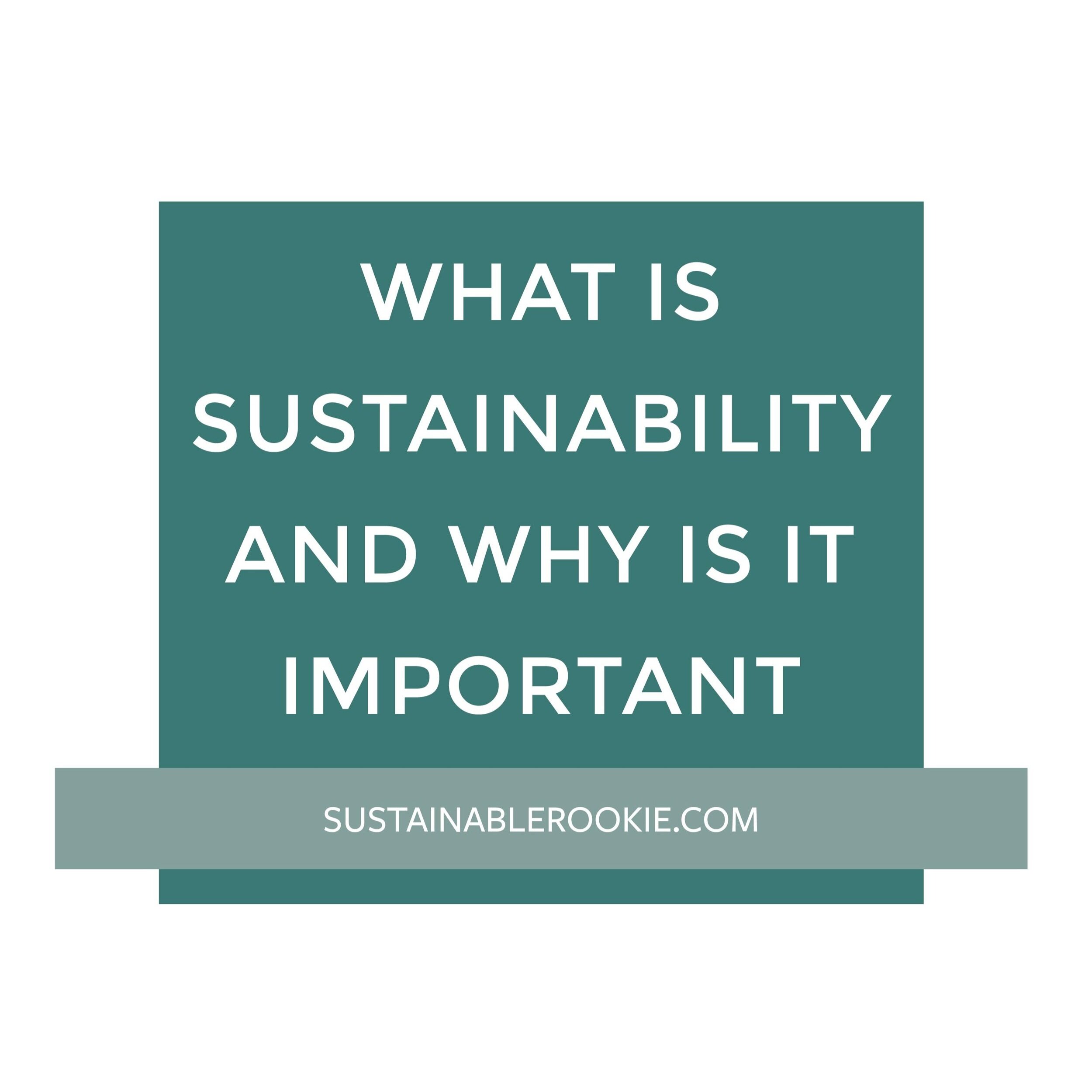8 Affordable Ways To Build A Sustainable Wardrobe
Before I took an online course on Fashion and Sustainability, I had no idea how this industry had such a huge impact on the environment, as I had always focused my attention on the meat industry. The numbers surprised me: 21 billion tons of textiles are sent to landfills every year, and the industry releases 10% of global carbon emissions, to name some of them.
For this reason, sustainability in fashion is very important. However, it’s not only about what we do with our clothes after we think we no longer need them, but what happens before you buy them. The processes, the workers behind a garment, the materials, are all equally important.
Just like boycotting the animal products’ industry by starting a plant-based diet or becoming a vegan, we have a lot of power as consumers to generate change. Companies must take responsibility, start embracing more sustainable processes and materials, and be transparent. The power of demand is in our hands. If everyone starts making small changes, they will add up and create a big change. We can see that with veganism, for instance. Even infamous fast-food companies are offering plant-based options to satisfy that demand. The irony of it makes the victory taste so much sweeter.
For you to take a step towards that change, I’ve made a list of 8 affordable ways to build a sustainable wardrobe. This won’t happen overnight. You can start with one at a time. The most important thing to consider, in my opinion, is to think before buying something. Reducing our consumption can have a significant impact on the environment. Fast fashion–and society in general–always tries to sell us more things than we need. They want to convince us that we need new clothes every three months, that we’re never trendy enough, that we can’t be a valuable human being living in society if we don’t dress accordingly. That’s not true at all. When we slow down our shopping pace, we start buying things we know will last, which means stepping away from trends. When we do this, each piece is more personal, and we can therefore develop our own individuality in fashion. It becomes something more authentic, more artistic, and self-expressive. In my opinion, that’s what fashion should be about.
HOW TO BUILD A SUSTAINABLE WARDROBE ON A BUDGET
Use what you already own
The number of times a garment is worn has declined by 36% in 15 years. This is a very important statistic that needs change. We can’t see fashion as disposable assets; that only means more clothes in the landfill, and more demand for new items, which means more pollution in the processes, water consumption, and overall waste of resources.
Mend your clothes
Making your garments last many years is also an easy and affordable way of having a sustainable wardrobe. The disposability promoted by today’s fashion industry implies that we have to throw away our clothes if they break even just a bit, because you can just buy new ones for a few bucks. The low prices of fast fashion brands and this mindset that has been cultivated by them, trick us into thinking this is the normal cycle of a piece of clothing. This, however, is not the case. When your clothes become unstitched, or lose a button, for instance, you can just fix them. If your white t-shirts become yellow, you can just bleach them (baking soda, vinegar, hydrogen peroxide). By no means should you throw away your clothes for these reasons. When your clothes are too broken to ever use again, you can use them as rags.
Thrift
Buying secondhand clothes is my favorite option for giving new life to your wardrobe, with the old! There are many treasures you can find when you thrift, particularly because of this disposable mindset people have, that leads them to give away clothes that are in perfect condition. I remember buying a black short for $3 and a purse for $5 in GoodWill. You can also try the Salvation Army, or used clothes apps, like Poshmark and thredUP. This way, we also support a circular fashion model, in which clothes aren’t thrown away, but reused.
Lend & borrow
Having been raised with a sister and a mom that share my same clothing sizes, I’m used to sharing my clothes, and borrowing from them (sometimes voluntarily, sometimes we just stole each other’s clothes). This is very convenient when it comes to items that aren’t worth buying because you will just use once. For example, a party dress, or a jacket if you live in a warm place. It also applies to other things, like camping or ski gear. Why would you buy something you probably won’t use again, and will just get stored for years or thrown away?
Swap
A similar approach to borrowing clothes, you can swap them! A sustainable way of changing things up in your closet a bit, without costing the earth or your wallet. You can see it as a game. You can get together with your friends, and everyone takes the clothes they no longer use. When you see something you like, you take it, and in return you give that person one of your things.
Rent
There are a couple of options for renting clothes. One of them is Rent The Runway, which offers you memberships for getting a certain number of designer clothes per month. This way, you have versatility and trends, but you don’t have to spend the big bucks for it, or to use clothes as a ephemeral convenience. I think it could be a fantastic option for someone who works in fashion or whose job depends on their image. You could also check your local renting stores, which can be practical for special occasions. Even renting your wedding dress can work for some people. The possibilities are endless!
choose Sustainable brands
For those cases in which you definitely want or need to buy something new, choose sustainable brands. What makes them sustainable is not just the finished product, but their processes, materials, textile waste, water management, how they treat their workers, the quality of the clothes, how they ship products, how transparent they are, if they respect animal rights, and what their carbon and environmental footprint is. Today, some companies sell one product made with recycled bottles, and they think they’re done with helping the environment. That doesn’t make a brand sustainable, it means they’re greenwashing. On the other hand, if they sell dozens of collections a year, and make sales constantly, they’re promoting fast fashion. Slow fashion is the most eco-friendly choice. You will probably have to pay a bit or way more than with fast fashion brands, but you will be investing in timeless pieces and in companies that care about the environment and pay their workers. Anyway, I think that just by slowing down, you will still spend less than if you buy tons of clothes all the time. The planet is worth those extra bucks (you otherwise have the more affordable options to build your sustainable wardrobe, listed above). Start learning which brands are sustainable. The Good On You app is a great way to start. I always use it to learn more about a brand, but then I do my own research just in case. Soon, you will have a list on your mind with many sustainable brands that deserve our money.
Don’t wash clothes so often
As well as fixing your clothes instead of just throwing them away, you can also try to take better care of them. Investing in quality clothes from sustainable brand is an easy way to ensure they last a long time (a cheap $10 shirt might not survive a first wash). However, another way of extending your clothes’ lifespan is to not wash them so frequently. When we wash clothes, we not only release microplastics into the water (as most clothes are made from plastic), but we wear them out. The less you do laundry, the better. You should definitely put them in the laundry bin when they’re dirty or sweaty, but most of us have a tendency to throw everything into the washing machine, even if they’re not really dirty (sweaters are the perfect example). I’ve written a whole blog post on how often you should wash your clothes, which you can check out for more detailed information.
These are my 8 tips on how to build a sustainable wardrobe with a low budget. You could choose to follow all of them, or just one, which will depend on each person’s lifestyle and needs. The important thing is that no matter how many you succeed in following, you will already be taking a step forward in your sustainability journey, and you can try the rest when you feel more comfortable.
I hope these were useful, and you can let me know in the comments if you would add any other tip, or if you’ve tried these and what was your experience like.
If you’d like to know more about sustainability and read my future posts, please don’t forget to subscribe to my newsletter!







